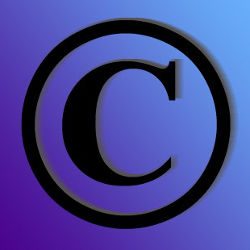
In 2010 ACM published approximately 18,000 articles in its Digital Library (DL). As a condition of publication, a designated author of each of those articles is required to sign an agreement that transfers copyright to ACM. Many authors execute the transfer with little thought about what rights they are transferring, what rights they are retaining, and perhaps most importantly, why transferring copyright to ACM provides any benefits to them and to the larger computing community. Some authors view the copyright transfer as a "land grab" by ACM of their intellectual property and only grudgingly execute the transfer form. This misperception about the goals and purpose of ACM’s copyright policy sometimes appears in blogs and postings to discussion lists on academic publishing. Our intent here is to briefly highlight some key provisions of ACM’s copyright policy (the full text can be found at http://www.acm.org/publications/policies/copyright_policy) to dispel some misperceptions, and to describe some recent changes to the policy that benefit both our authors and the Association.
Background
ACM’s original copyright policy was reformulated in 1994 specifically to address access and usage rights in the digital environment. The major principles in this landmark policy were widely adopted by other scholarly societies and eventually by commercial publishers as well.
Nonetheless, few could anticipate the rapid adoption of electronic publishing and the accompanying development of enhanced services and functions. To keep pace with and adapt to these changes, the Publications Board continually reviews our copyright policy. These reviews consider input collected from the various stakeholders: authors, subscribers, and the Association. Indeed, the reformulated policy has undergone multiple revisions over the past 17 years. The current version, Version 6, was adopted in January 2011. As part of our most recent review, the Publications Board also carried out a comparative review of our copyright policy with the copyright and licensing policies of several major scientific publishers. We did this not only to determine how ACM’s policy compared to those of its peers (we compare very favorably), but also to uncover good ideas that might be useful to incorporate in our policy.
Rights Retained by Authors
Many authors assume they are giving up all rights to use their material in future works (as is common with commercial publishers) when they transfer copyright to ACM. In fact, ACM’s policy allows authors to reuse the material in their future works without restriction, without cost, and without any need to ask for permission. The complete list of rights retained by authors under ACM’s copyright transfer agreement is:
- All other proprietary rights to the work such as patent,
- The right to reuse any portion of the work, without fee, in future works of the author’s own, including books, lectures, and presentations in all media, provided that the ACM citation and notice of the Copyright are included,
- The right to revise the work,
- The right to retain copyright to embedded images (for example, figures) with independent artistic value,
- The right of an employer that originally owned copyright to distribute definitive copies of its author-employees work within its organization, and
- The right to post author-prepared versions of the work covered by ACM copyright in a personal collection on their own home page, on a publicly accessible server of their employer, and in a repository legally mandated by the agency funding the research on which the work is based. Such posting is limited to noncommercial access and personal use by others, and must include the ACM copyright notice both embedded within the full-text file and in the accompanying citation display as well.
The last three items deserve special comment. The right to retain copyright to embedded images with independent artistic value was a change the Publications Board adopted last January. Many of the images that appear in ACM’s computer graphics conference proceedings and journals require substantial effort to produce (both creative effort and production effort) and the authors or their companies often wish to separately exploit these images as artworks. Based on feedback from the graphics community, the Publications Board added the ability for authors to selectively retain copyright to such images.
The rights addressed by the last two items have always been somewhat controversial in the community. That is not surprising as these items expose the tension between ACM providing a means for free and open access to every article and sustaining a robust, publishing program with subscription revenue. This tension was noted in David Wise’s June 1999 Communications article that described the Publications Board rationale for granting these rights (see http://dx.doi.org/10.1145/303849.303870).
In fact, as a not-for-profit professional society, ACM has priced its DL subscriptions at the low end of the spectrum for commercial and non-profit society publishers alike. The result is the DL is now available at some 3,000 academic, government, and industrial sites in 75 countries, accounting for an estimated 1520 million persons with potential access. For calendar year 2011 we are projecting approximately 15 million full-text downloads by 1.5 million active users. So, the "pay wall" erected by subscriptions is not a barrier to the vast majority of research scientists. And, the subscription revenues contribute to DL services that are free to the community at large, such as the DL’s embedded Guide to Computing Literature, a free, discipline-specific discovery service that indexes the top research publications of the entire field, with Web pages that aggregate citation and usage data in profiles for individual authors, conferences, and institutions.
ACM continues to look for ways in which it can strike an even better balance between open access and the need to generate revenues to extend and sustain its editorial services, databases, and servers. One new feature that ACM will roll out in the fall will enable authors to obtain a special link for any of their ACM articles that they may post on their personal page. Anyone who clicks on this link can freely download the definitive version of the paper from the DL. In addition, authors will receive a code snippet they can put on their Web page that will display up-to-date citation counts and download statistics for their article from the DL.
For calendar year 2011 we are projecting roughly 15 million full-text downloads by 1.5 million active users. So, the "pay wall" erected by subscriptions is not a barrier to the vast majority of research scientists.
This referrer-linking service has major benefits for our authors and for the ACM DL. First, it provides free access to the definitive version of the article permanently maintained by ACM in the DL, enabled by the authors through their home-page bibliography. There will no longer be a need to post author-prepared versions. The benefit to the author and ACM is that download statistics maintained and reported by the DL will be more complete as they will reflect activity of users accessing the article from the author’s home page, and automatic indexers will point to the article in the DL rather than non-definitive copies hosted elsewhere without any promise of being permanently maintained.
Benefits of Copyright Transfer
One might wonder, given the generous rights retained by authors, why ACM requires authors to transfer copyright to ACM at all. In fact, the transfer of copyright to ACM provides substantial benefit to the computing research community and to authors.
By owning exclusive publication rights to articles, ACM is able to develop salable publication products that sustain its top-quality publishing programs and services; ensure access to organized collections by current and future generations of readers; and invest continuously in new titles and in services like referrer-linking, profiling, and metrics, which serve the community. Furthermore, it allows ACM to efficiently clear rights for the creation, dissemination, and translation of collections of articles that benefit the computing community that would be impossible if individual authors or their heirs had to be contacted for permission. Ownership of copyright allows ACM to pursue cases of plagiarism. The number of these handled has been steadily growing; some 20 cases were handled by ACM in the last year. Having ACM investigate and take action removes this burden from our authors, and ACM is more likely to obtain a satisfactory outcome (for example, having the offending material removed from a repository) than an individual.
Conclusion
ACM’s policies regarding author rights, reuse permissions, and copyright transfer, coupled with its business model offering multiple access paths to content—some of them free of charge—and a commitment to keep subscription prices for both individuals and institutions very low—all combine to maximize wide distribution of ACM publications and global access to them. As part of its continued stewardship of this resource, ACM will continue to seek input from its stakeholders and adapt its policies to improve the experience of both the authors that generate content and the many users that access this content.



Join the Discussion (0)
Become a Member or Sign In to Post a Comment